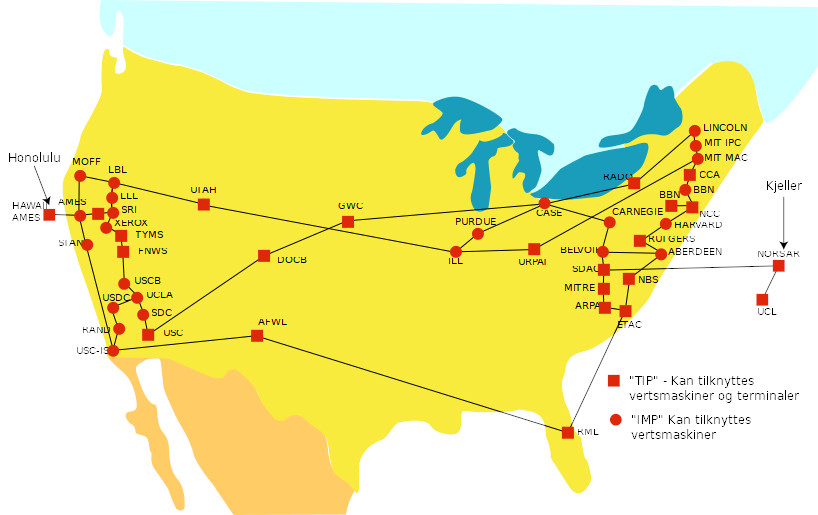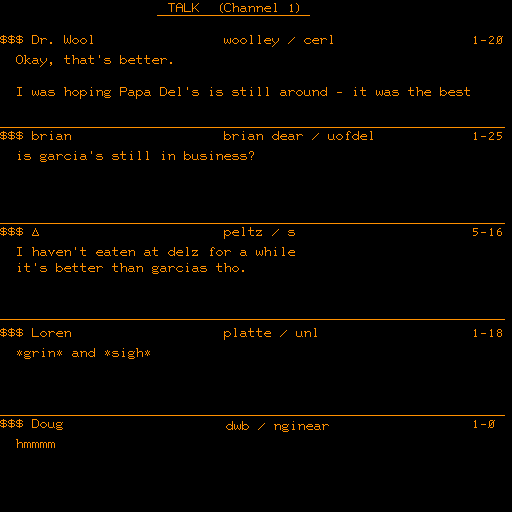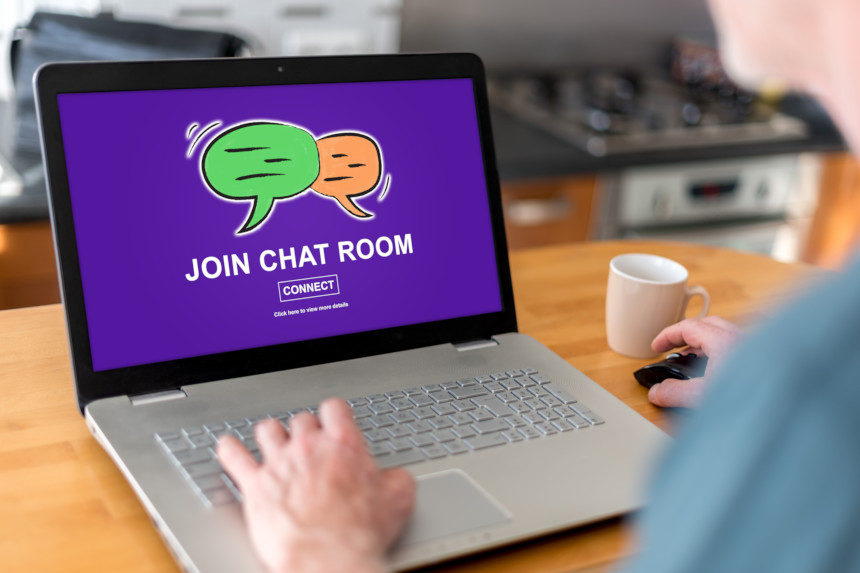If the past year has been the Age of Zoom, then it’s also been the low-key Age of The Zoom Chat. Admit it: you’ve been in a meeting where everyone is running their own counter-dialogue in that other window. What you might not realize in that very of-the-moment experience is that the Chat Room made its debut 50 years ago. Here’s the story of that original version and a look at some of Chat’s children.
The Original Chat
https://commons.wikimedia.org/wiki/File:Arpanet_1974.sv

This week in 1971, the first version of chat made its debut on the ARPANET. That was the early network developed in part by the Department of Defense; its name comes from the Advanced Research Project Agency section of the department. As a packet-switching network that used the TCP/IP protocols, ARPANET is the forerunner of the modern internet. The network would soon become a “network of networks,” with connections to entities like universities and the National Science Foundation. The first email would be developed on the system, also in 1971.
As for chat specifically, it came from the work on Berkeley PhD Murray Turoff. Turoff worked for the government in the Office of Emergency Preparedness under the Nixon administration. He was instructed to put together an alternative communication system. His system, EMISARI (Emergency Management Information System and Reference Index ), connected users so that up to 10 offices could communicate in “real time;” nicknamed the party line, EMISARI was in common use on the system until 1986.
Talkomatic

EMISARI was first, but it was still only available to a limited number of cleared users. The first chat system to be usable by the public in any capacity began to come together in 1973; in Talkomatic, you could actually watch the messages appear letter-by-letter. It was developed at the University of Illinois by Doug Brown and David R. Woolley on the school’s PLATO system, which was an early use of computers for instruction. Chat “channels” were limited to five participants.
CB Simulator
The 1989 CompuServe commercial (Uploaded to YouTube by Mancini TV Classics)
In 1980, CompuServe unveiled the CB Simulator. CompuServe already had a solid reputation as the first big internet service provider in the U.S. The CB Simulator was the brainchild of Alexander “Sandy” Trevor, an exec at the company. Trevor used the CB branding because while “chat rooms” were still a new concept to most of the country, the general public was very familiar with the idea of CB radio (see, for example: #1 hit song “Convoy”). Use of the program lasted well into the 1990s. CompuServe was acquired by AOL in 1997; today, it’s part of Verizon’s Oath Inc. subsidiary that contains both it and AOL.
Internet Relay Chat
Jarkko Oikarinen of Finland introduced IRC in 1988. The method gained popularity as users could install it on systems and conduct not only chats, but data transfers. This is one of the early examples of the file-sharing that would bedevil music companies in the late 1990s and early 2000s. IRC applications continue to be widespread, thought their use has gone down concurrent with the rise of the social media giants.
AOL Chat Rooms
After earlier incarnations dating back to 1983, America Online engaged a new strategy in 1989. While CompuServe was well-entrenched in the tech community, AOL pitched itself as the place for new users, showcasing features like games and email. Its incredibly aggressive marketing and ubiquitous “Try AOL for FREE” CD-ROMs soon made AOL the dominant internet service provider. The Chat Rooms feature became extremely popular, and the company would later add a private take on the chat concept, AOL Instant Messenger. Today AOL is part of Verizon’s Oath, Inc. division, where it focuses on digital media production and advertising.
While these and a number of other chat platforms lasted for quite some time, and, in cases like IRC, are still in use today, their period of greatest use gave way to the rise of today’s social media landscape. In the early 2000s, MySpace, followed by Facebook, Twitter, and many more, changed the shape of online discourse. Many programs and services, like Zoom, make use of chat features to this day, but the notion of a destination chat room has been refigured by time and technology. Whether that’s a good or a bad thing . . . well . . . you can continue that discussion in the comments.
Featured image: thodonal88 / Shutterstock
Become a Saturday Evening Post member and enjoy unlimited access. Subscribe now




Comments
I find this to be quite fascinating, and likely unknown as common knowledge. I’d long heard early versions of the internet had origins going back to the late ’60s, which built upon tech prior to then going further back than any of us realize. The fact that the telegraph’s origins date back to the 1840’s is actually more impressive than the rolling snowball of tech getting bigger and faster with each passing decade.
To discount origins would be like looking at McDonald’s and forgetting it started out with only one location, or that Cloris Leachman was around for many years before becoming famous. Same thing with the ARPANET and EMISARI written of here. The Talkomatic ‘chat’ from 1973 is surprisingly modern, yet with ties to the telegraph on the carousel of progress that must be acknowledged. This was all still very underground, but doesn’t change the fact it WAS around then.
I love the ’89 CompuServ commercial. Again, what we have now we had then too, just on a much more limited basis. The graphics of this ad are really excellent, and have held up very well. I HAD to click on the ‘Convoy’ song, Troy. So old fashioned and wonderful to hear now. I’m almost positive the Post did a feature on the CB radio craze in the Ford Administration. So far back in the rear view mirror of life now.
The discussions and chats will definitely be going on and on. We… just need to be a lot more careful about what we say now on Twitter and YouTube as to not be banned. Even agreeing with someone else’s comment on what they’d like to see happen (to Mitch McConnell) got me banned permanently by YT some months back. “I couldn’t agree more!” was all it took. My computer guy worked some wizardry magic for me. A lesson well learned to keep quiet on controversy as our rights to free speech are largely gone, and those left likely only to keep on shrinking.